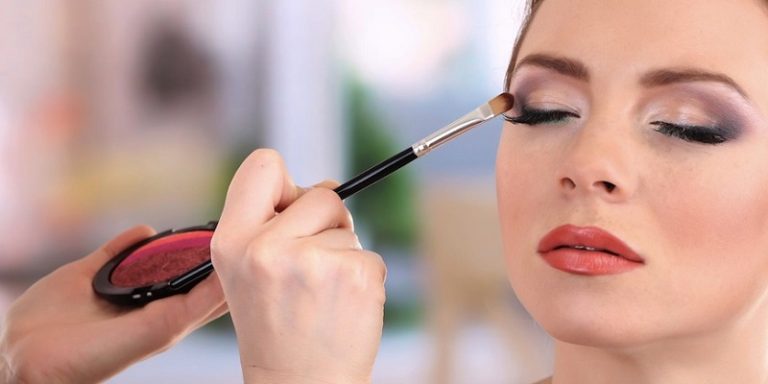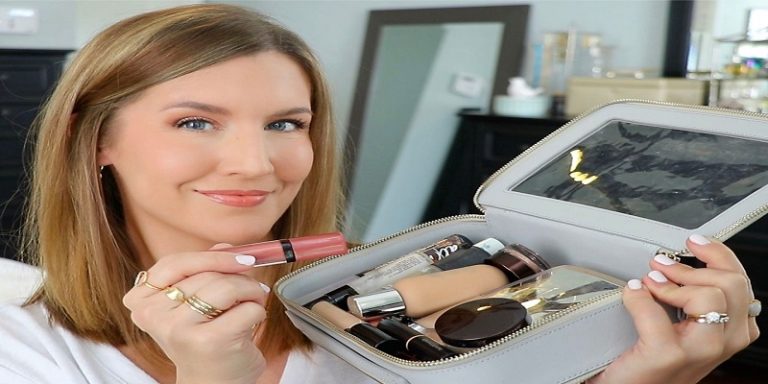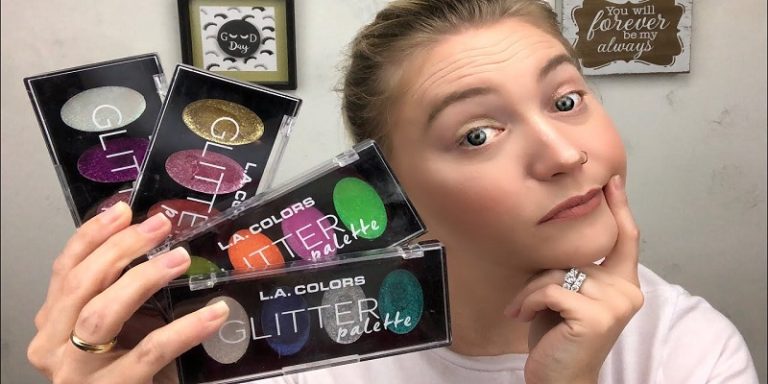How To Make Your Own Prosthetic Makeup?
Last Updated on June 18, 2025 by Jaclyn A. Neeley
To make your own prosthetic makeup, first create a mold of the area you want to apply the prosthetic, mix silicone and catalyst together, pour into the mold, and let it dry overnight. Once the prosthetic is ready, apply it with makeup adhesive and blend with your skin tone.
Prosthetic makeup can be a fun and creative way to transform yourself into any character you desire. Whether you’re looking to create a spooky halloween look or an otherworldly creature, prosthetic makeup can take your costume to the next level. However, purchasing pre-made prosthetics can be expensive and limit your options. By making your own prosthetics at home, you can have full control over your design and save money in the process. In this article, we’ll guide you through the steps on how to make your own prosthetic makeup using silicone and everyday items found around your house.

Credit: www.qcmakeupacademy.com
Understanding Prosthetic Makeup
Prosthetic makeup is a form of cosmetic artistry that involves designing and creating replicas of body parts to alter one’s appearance. It is widely used in the film and entertainment industry to create special effects that enhance the realism of a character or add drama to a scene.
If you are looking to create your own prosthetic makeup, you have come to the right place. In this article, we will explore the basics of prosthetic makeup, its types, and how you can make your own. So, let’s dive right in!
Definition Of Prosthetic Makeup
Prosthetic makeup is a technique that uses prosthetics or molds to create lifelike replicas of body parts, which can be attached to the skin using adhesives or other agents. The prosthetics are made of various materials such as silicone, foam latex, and gelatin.
Prosthetic makeup is often used in the film industry to create special effects that alter an actor’s appearance. Some common prosthetic makeup applications include creating realistic wounds, scars, and other physical deformities.
Types Of Prosthetic Makeup
There are different forms of prosthetic makeup that you can use to enhance your appearance.
- Foam latex prosthetics: these are made of foam latex, which is lightweight and flexible. Foam latex prosthetics are commonly used to create facial features such as noses, ears, and chins.
- Silicone prosthetics: these are made of silicone, which is more pliable than foam latex, making it ideal for creating realistic skin textures. Silicone prosthetics are often used to create full-face prosthetics.
- Gelatin prosthetics: these are made of gelatin, which is a flexible material that allows the prosthetic to blend seamlessly with the skin. Gelatin prosthetics are commonly used to create gruesome wounds and injuries.
When creating prosthetic makeup, it is important to choose the right materials that are safe for use on the skin. You should also ensure that the prosthetic is well-fitted to the actor’s skin to prevent irritation or discomfort. In the next section, we will discuss how to create your own prosthetic makeup at home.
Creating A Prosthetic Makeup: Step-By-Step Guide
Prosthetic makeup is a fantastic way to transform your face or hands to create a stunning special effects look. It’s a perfect way to take your halloween or cosplay game to the next level. Have you considered creating your prosthetic makeup?
In this guide, you will learn how to create your own prosthetic makeup with simple materials.
Step 1: Preparing The Mold
The first step is to create a mold of the area where you would like to wear the prosthetic makeup.
- Clean the skin surface and cover the area with petroleum jelly
- Apply a layer of liquid latex and let it dry completely
- Repeat the process for two to three times to create a durable mold.
Step 2: Mixing The Materials
Now, it’s time to mix the materials that you will need to create the prosthetic.
- Prosthetic grade gelatin
- Glycerin
- Water
- Food coloring
Mix all the ingredients in a pot until the gelatin dissolves entirely. The solution should have a smooth and even texture.
Step 3: Casting The Prosthetic
The third step is to cast the prosthetic by pouring the gelatin solution into the mold; follow the instructions below:
- Fill the mold with the gelatin solution, leaving some space around the edges.
- Let it sit until the gelatin sets and hardens.
- Remove the prosthetic carefully by peeling the edges of the mold.
Step 4: Finishing The Prosthetic
Now that you have a prosthetic piece, it’s time to apply some finishing touches.
- Trim and shape the prosthetic to match your desired look.
- Use makeup or paint to add color and texture to the prosthetic.
- Apply a layer of spirit gum to the back of the prosthetic and attach it to your skin.
There you have it – an easy-to-follow guide on how to create a prosthetic makeup. With a little bit of creativity and patience, you can transform your face or hands into something extraordinary. Try it today, and let your imagination run wild!
Tips And Tricks For Successful Prosthetic Makeup
Prosthetic makeup is a remarkable technique that has been used in movies, tv shows, and theatrical performances for years. Creating prosthetic makeup requires skill, patience and precision. If done correctly, it can elevate the visual appeal and showcase the character’s depth.
Here we will take a look at some essential tips and tricks to make successful prosthetic makeup.
Tools And Equipment For Prosthetic Makeup
Prosthetic makeup requires several tools and equipment to create the desired effect.
- Sculpting tools like spatulas and sculpting wax
- Mold-making materials like silicone and alginate
- Adhesives like spirit gum and silicone adhesive
- Prosthetic transfer paper or foam latex
- Makeup brushes
- Powder puff or sponge applicators
- Paints and pigments
Choosing The Right Materials For Prosthetic Makeup
Choosing the right materials is crucial in creating successful prosthetic makeup.
- Always use quality materials that are skin-friendly and hypoallergenic.
- Select the right materials based on the character’s age, gender, skin type, and the scene’s environment.
- Consider the durability and longevity of the prosthetic when choosing the materials.
- Be open to experimenting with new materials to create unique prosthetics.
Application Techniques For Prosthetic Makeup
The application of prosthetic makeup is an art in itself.
- Always start with a clean, moisturized face, free from any dirt or oils.
- Use a primer to make the prosthetic makeup stick and last longer.
- Make sure to blend the prosthetic seamlessly into the skin, taking care not to leave any visible edges.
- Experiment with shading, highlighting, and color to create a more natural-looking effect
- Remember to apply makeup to the neck, ears, and other exposed body parts, so everything looks cohesive.
Maintenance And Care Of Prosthetic Makeup
Prosthetic makeup requires proper maintenance and care to keep it looking good throughout the performance.
- Remove the prosthetic carefully using a remover to avoid damaging the skin.
- Clean the prosthetic using a non-toxic cleaner and store it safely in an airtight container.
- Use a touch-up kit to fix any damages before the next use.
- Avoid sudden temperature changes, which may damage prosthetic makeup materials.
- Never apply makeup on top of damaged prosthetics.
Troubleshooting Common Prosthetic Makeup Problems
Prosthetic makeup is rarely perfect the first time around.
- The prosthetic is too thick: thin down the prosthetic using a sculpting tool and some isopropyl alcohol.
- The prosthetic is not sticking: use a stronger adhesive or fixative to make it stick.
- The prosthetic is too shiny: use a setting powder to reduce the shininess.
- The prosthetic is too loose: reinforce the edges with a stronger adhesive or fixative.
- The prosthetic is too tight: use a little lubricant to ease the fit.
In summary, making prosthetic makeup requires skill, practice, and some trial and error. With the right tools, materials, and techniques, you can create stunning prosthetic makeup that will elevate your character and deliver a memorable performance. Remember to always follow safety measures and properly maintain the prosthetics for longevity.
Frequently Asked Questions On How To Make Your Own Prosthetic Makeup?
Faqs For Making Your Own Prosthetic Makeup
### 1. What is prosthetic makeup? Prosthetic makeup includes creating and applying three-dimensional objects or features to the face or body for character or special effects makeup.
2. Where Can I Find Prosthetic Makeup Materials?
Prosthetic makeup supplies can be found at local costume and makeup stores, online vendors, or special effect studios.
3. What Materials Do I Need To Make Prosthetic Makeup?
Materials such as molding clay, casting silicone, and specialized paints are essential for creating prosthetic makeup, along with prosthetic sculpting tools, a mold-making frame, and a vacuum pump.
4. Can I Create Prosthetic Makeup Without Professional Training?
While professional training is recommended, there are many resources available online, including tutorials, classes, and books, that can help beginners learn the process of prosthetic makeup creation.
5. How Do I Prep My Skin For Prosthetic Makeup Application?
Prosthetic makeup requires a clean and dry skin surface for application, so make sure you wash and dry the area thoroughly before applying any prosthetic pieces.
Conclusion
In today’s world of media where people are big fans of eye-catching special effects, learning how to make prosthetic makeup is a valuable skill that can be used in many fields. The process requires patience, creativity, and some handy tools available online.
With this guide, you can experiment and try new things, and who knows maybe one day you could become a professional prosthetic makeup artist. In addition, making your own prosthetic makeup can save you a lot of money and time.
It gives you the chance to design your own unique and stunning creature feature, which will distinguish you from other makeup artists. Whether you have a personal project or a professional one, this guide has all the steps you need to create your own prosthetic makeup.
So get your toolkit ready and start creating!







